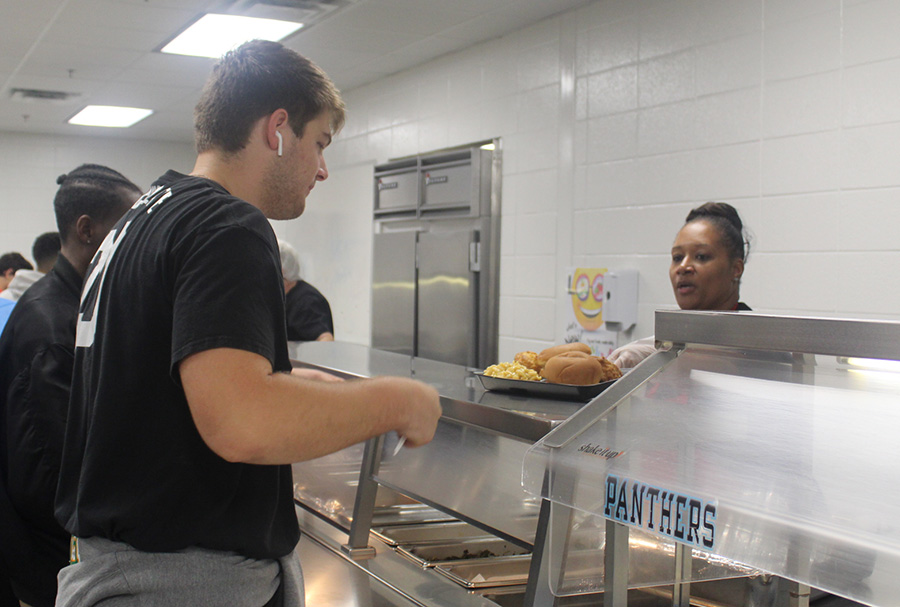Opinion: School lunch still overlooked
Senior Gabe Jones is served chicken nuggets, a whole-grain roll, and mac-and-cheese. This is an example of a common school lunch in the nation, and demonstrates the re-formulating of products to fit government guidelines. Students like Gabe need better quality food and more time to genuinely enjoy it.
In the U.S. each day, 31 million students pass through school lunch lines. Thanks to the Healthy, Hunger-Free Kids Act, they are no longer served greasy pizza, sauced chicken wings, and salted French-fries. This, however, does not eliminate all problems with school lunches.
Kids don’t want to eat the new, healthy lunches, so most end up in the trash. The Healthy, Hunger-Free Kids Act calls for 100% whole grain and low sodium, which can be difficult to uphold in school systems.
“Other than mandating more fruits and vegetables, the new regulations haven’t really changed anything except force manufacturers to re-engineer products,” director of culinary and nutritional services for Minneapolis Public Schools Bertrand Weber said.
Weber means that instead of regular donuts, manufacturers are forced to make, for example, whole grain donuts, which explains why school lunches go into the garbage.
The U.S. excels in the re-engineering of common foods to a somewhat healthy hybrid of chemicals, low-fat, processed, low-salt, lean, whole grain, and mystery substances. The National School Lunch Program needs to demolish the shortcuts and focus on the quality of the food so that students want to eat at lunch.
Unfortunately, a recent investigation performed by USA Today found that the nation’s largest fast-food chains have higher quality meat than the meat served to students nationwide.
Fast-food chains have more strenuous safety guidelines than what the U.S. Department of Agriculture enforces for the National School Lunch Program, the vital program responsible for the diets of millions of children.
Consider that in France, where childhood obesity is the lowest in the world, students enjoy a four-course school lunch. This meal, for example, could include cucumber vinaigrette, salmon lasagna with spinach, fondue with baguette for dipping, and fruit as dessert. All four courses would not pass the Healthy Hunger-Free Kids Act implemented in the United States.
Students in the U.S. also only have around 20 minutes to eat their meal, while French children may have as long as two hours to eat, socialize, or study.
Whether the problem is the lousy quality of the food, the meager time students are given, or the standards enforced upon school systems nationwide, school lunches are a dilemma that is frequently overlooked and needs to be revised.
Improving the condition of lunch menus, increasing the amount of safety checks, giving more time to kids, and offering a reconsideration of protocol may prove to be beneficial. We are feeding the next generation, so we should do it right.
Opinions expressed in editorials are those of the writer(s). These views may not represent the adviser, The Prowler, advertisers/sponsors, the Starr’s Mill High School administration or staff , or Fayette County Public Schools as a whole. Please see our FAQs for more information pertaining to the rights of The Prowler’s staff members.


